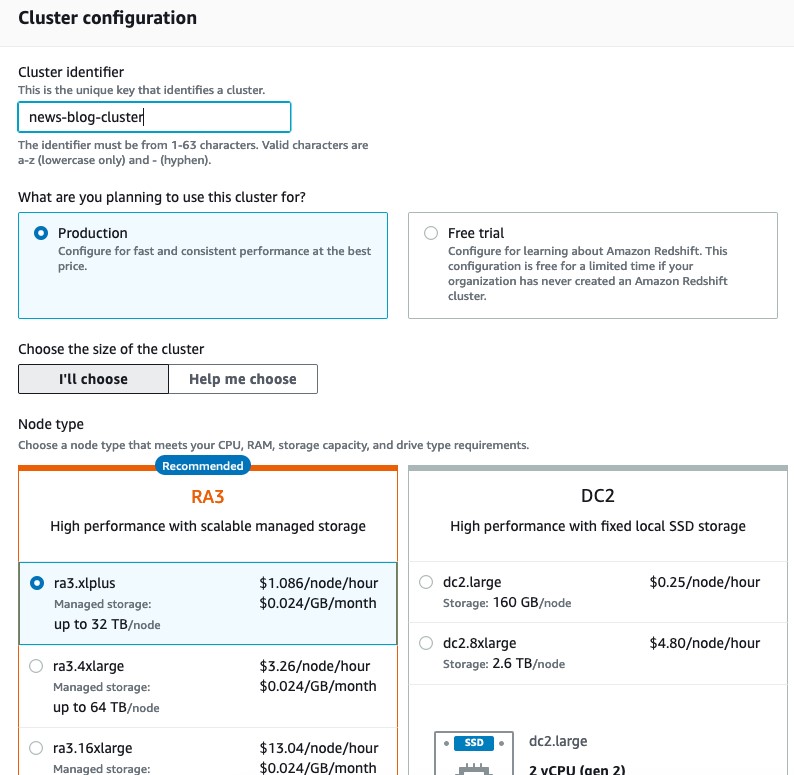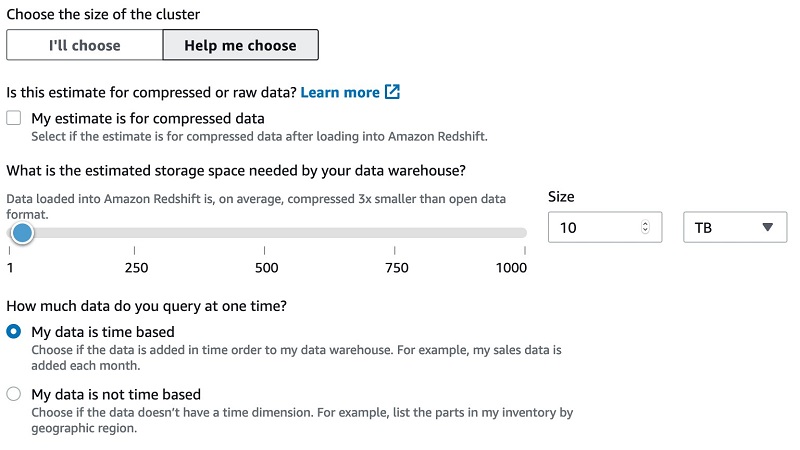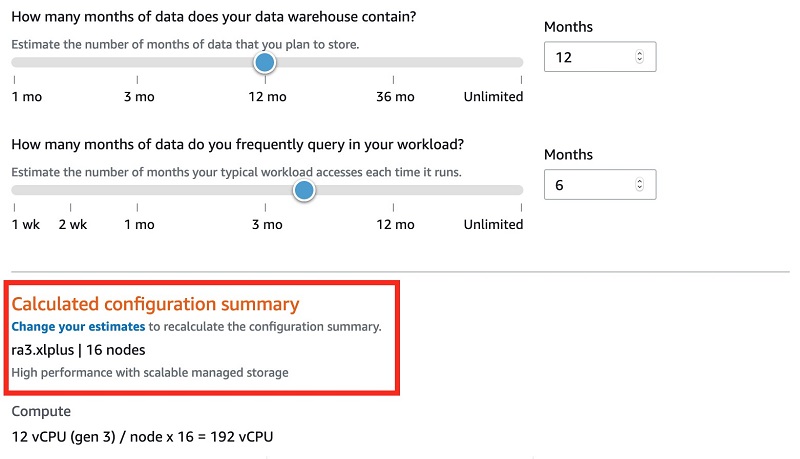Post Syndicated from BP Yau original https://aws.amazon.com/blogs/big-data/introducing-amazon-redshift-ra3-xlplus-nodes-with-managed-storage/
Since we launched Amazon Redshift as a cloud data warehouse service more than seven years ago, tens of thousands of customers have built analytics workloads using it. We’re always listening to your feedback and, in December 2019, we announced our third-generation RA3 node type to provide you the ability to scale and pay for compute and storage independently. In this post, I share more about RA3, including a new smaller size node type, and information about how to get started.
RA3 nodes in Amazon Redshift
The new RA3 nodes let you determine how much compute capacity you need to support your workload and then scale the amount of storage based on your needs. The managed storage of Amazon Redshift automatically uses high-performance, SSD-based local storage as its tier-1 cache. The managed storage takes advantage of optimizations such as data block temperature, data block age, and workload patterns to optimize Amazon Redshift performance and manage data placement across tiers of storage automatically. No action or changes to existing workflows are necessary on your part.
The first member of the RA3 family was the RA3.16xlarge, and we subsequently added the RA3.4xlarge to cater to the needs of customers with a large number of workloads.
We’re now adding a new smaller member of the RA3 family, the RA3.xlplus.
This allows Amazon Redshift to deliver up to three times better price performance than other cloud data warehouses. For existing Amazon Redshift customers using DS2 instances, you get up to two times better performance and double the storage at the same cost when you upgrade to RA3. RA3 also includes AQUA (Advanced Query Accelerator) for Amazon Redshift at no additional cost. AQUA is a new distributed and hardware-accelerated cache that enables Amazon Redshift to run up to ten times faster than other cloud data warehouses by automatically boosting certain types of queries. The preview is open to all customers now, and it will be generally available in January 2021.
RA3 nodes with managed storage are a great fit for analytics workloads that require best price per performance, with massive storage capacity and the ability to scale and pay for compute and storage independently. In the past, there was pressure to offload or archive old data to other storage because of fixed storage limits, which made maintaining the operational analytics dataset and querying the larger historical dataset when needed difficult. With Amazon Redshift managed storage, we’re meeting the needs of customers that want to store more data in their data warehouse.
The new RA3.xlplus node provides 4 vCPUs and 32 GiB of RAM and addresses up to 32 TB of managed storage. A cluster with RA3.xlplus node-type can contain up to 32 of these instances, for a total storage of 1024 TB (that’s 1 petabyte!). With the new smaller RA3.xlplus instance type, it’s even easier to get started with Amazon Redshift.
The differences between RA3 nodes are summarized in the following table.
| vCPU | Memory | Storage Quota | I/O | Price (US East (N. Virginia)) |
|
| ra3.xlplus | 4 | 32 GiB | 32TB RMS | 0.65 GB/sec | $1.086 per hour |
| ra3.4xlarge | 12 | 96 GiB | 64TB RMS | 2 GB/sec | $3.26 per hour |
| ra3.16xlarge | 48 | 384 GiB | 64TB RMS | 8 GB/sec | $13.04 per hour |
Creating a new Amazon Redshift cluster
You can create a new cluster on the Amazon Redshift console or the AWS Command Line Interface (AWS CLI). For this post, I walk you through using the Amazon Redshift console.
- On the Amazon Redshift console, choose Clusters.
- Choose Create cluster.
- For Choose the size of the cluster, choose I’ll choose.
- For Node type, select your preferred node type (for this post, we select xlplus).
The following screenshot shows the Cluster configuration page for the US East (N. Virginia) Region. The price may vary slightly in different Regions.

If you have a DS2 or DC2 instance-based cluster, you can create an RA3 cluster to evaluate the new instance with managed storage. You use a recent snapshot of your Amazon Redshift DS2 or DC2 cluster to create a new cluster based on RA3 instances. We recommend using 2 nodes of RA3.xlplus for every 3 nodes of DS2.xl or 3 nodes of RA3.xlplus for every 8 nodes of DC2.large. For more information about upgrading sizes, see Upgrading to RA3 node types. You can always adjust the compute capacity by adding or removing nodes with elastic resize.
If you’re migrating to Amazon Redshift from on-premises data warehouses, you can size your Amazon Redshift cluster using the sizing widget on the Amazon Redshift console. On the Cluster configuration page, for Choose the size of the cluster, choose Help me choose.

Answer the subsequent questions on total storage size and your data access pattern in order to size your cluster’s compute and storage resource.

The sizing widget recommends the cluster configuration in the Calculated configuration summary section.

Conclusion
RA3 instances are now available in 16 AWS Regions. For the latest RA3 node type availability, see RA3 node type availability in AWS Regions.
The price varies from Region to Region, starting at $1.086 per hour per node in US East (N. Virginia). For more information, see Amazon Redshift pricing.
About the Author
 BP Yau is a Data Warehouse Specialist Solutions Architect at AWS. His role is to help customers architect big data solutions to process data at scale. Before AWS, he helped Amazon.com Supply Chain Optimization Technologies migrate its Oracle data warehouse to Amazon Redshift and build its next generation big data analytics platform using AWS technologies.
BP Yau is a Data Warehouse Specialist Solutions Architect at AWS. His role is to help customers architect big data solutions to process data at scale. Before AWS, he helped Amazon.com Supply Chain Optimization Technologies migrate its Oracle data warehouse to Amazon Redshift and build its next generation big data analytics platform using AWS technologies.